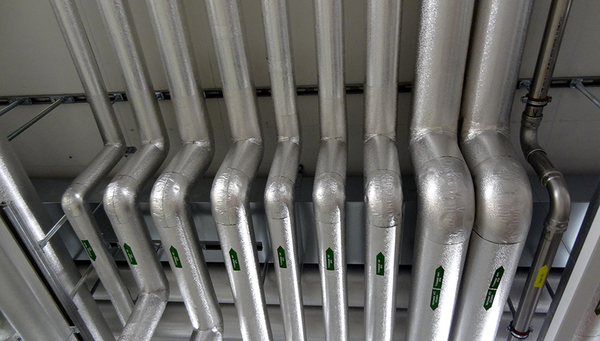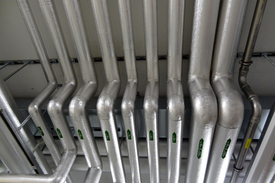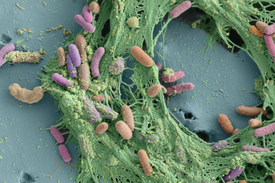News Detail
Customising legionella control measures
January 21, 2021 |
Questioning conventional wisdom is part of the scientist’s job. This also applies to legionella in plumbing systems. For decades, experts have maintained that the proliferation of these bacteria (the pathogen causing legionnaires’ disease) is promoted by stagnation – which is even considered to be the main risk factor for legionella growth. It was feared that the lockdowns in spring 2020 – when many large buildings, including their water systems, were unused for weeks on end – could lead to a massive rise in the incidence of legionnaires’ disease. These concerns were regularly reported not only in the press and on social media but also in scientific publications.
However, Eawag scientist Frederik Hammes warns against the “mantra-like” repetition of the need to avoid stagnation of water in order to prevent the contamination of plumbing systems with legionella: “Stagnation is just one of many – interacting – factors, and a lot more case studies will be needed to obtain a clearer picture of their effects.” Accordingly, as co-author of an article recently published in Environmental Science Water Research & Technology, Hammes calls for a more nuanced approach to this issue, since the situation is less clear-cut than has long been assumed.
Impact of stagnation unclear
Questions as to how stagnation actually affects the growth of legionella were raised by a study carried out in the spring as part of the LeCo project (Legionella control in buildings), which is led by Hammes. In the study, samples were collected from a large building during and after a period of stagnation, after flushing, and during recommissioning. The results showed that, rather than increasing concentrations of legionella, extended stagnation actually led to a slight decrease. Likewise, subsequent low-level operation of the system did not lead to any increase in legionella concentrations.
Following a review of the literature, Hammes and Eawag colleague William Rhoads have now published an article in which they conclude that the available scientific evidence regarding the impact of stagnation on the growth of legionella is “more complicated and less convincing” than has often been suggested in the past. They argue that “a more careful approach in documenting the impacts of stagnation” is needed in order to assess the health risks of legionella in plumbing systems.
High costs involved in avoiding stagnation
For this reason, the two Eawag scientists formulated a number of questions and criteria which should be addressed and taken into account in future studies of legionella growth during COVID-19 lockdown stagnation. The authors highlight the need for a more detailed definition of the highly variable conditions which may be observed during stagnation. Hammes emphasises: “Given the costs associated with reducing water system stagnation in buildings, we need a better understanding of these variables to help shape recommendations for practice.” This does not mean, however, that stagnation is of no concern: “It certainly is one factor that can adversely affect water quality.”
The foundations for decision-making should also be improved by the LeCo project, which was launched in 2020 and will run for four years. For this multidisciplinary research programme, several institutions led by Eawag have joined forces to address the legionella issue in depth. The wide-ranging project is receiving a total of CHF 2.5 m in funding from various federal offices.
Training for effective sampling
One strand of the project is concerned with the further development, optimisation and standardisation of collection and subsequent analysis of water samples from plumbing systems. In an article recently published in Aqua & Gas, a group of authors from the various partner organisations presents an overall sampling strategy, which also includes supporting guidance and tools for decision-making and documentation. Also currently under development is a training programme which will focus on the skills required for appropriate sampling.
“Building plumbing is an extensive ecosystem with innumerable niches.” Franziska Rölli (HSLU)
Franziska Rölli of Lucerne University of Applied Sciences (HSLU), another researcher involved in the LeCo project, points out: “Building plumbing is an extensive ecosystem with innumerable niches varying in terms of temperature, nutrient availability and other factors.” Bacterial counts and community composition thus also vary widely – not only between individual parts of a drinking water system but also between different systems. This needs to be taken into account in sampling and in the interpretation of results. This means that there are no universally applicable measures for controlling legionella in plumbing systems – what is needed are customised approaches, adapted to the specific circumstances.
Stagnation can adversely affect water quality in plumbing systems, but it is only one among many– interacting – factors.
(Stock image, zvg)
egionella bacteria inhaled in water droplets can cause legionellosis, which may take the form of acute pneumonia (legionnaires’ disease).
(Electron micrograph: ZMB (UZH) & Frederik Hammes)
Cover picture: zvg



